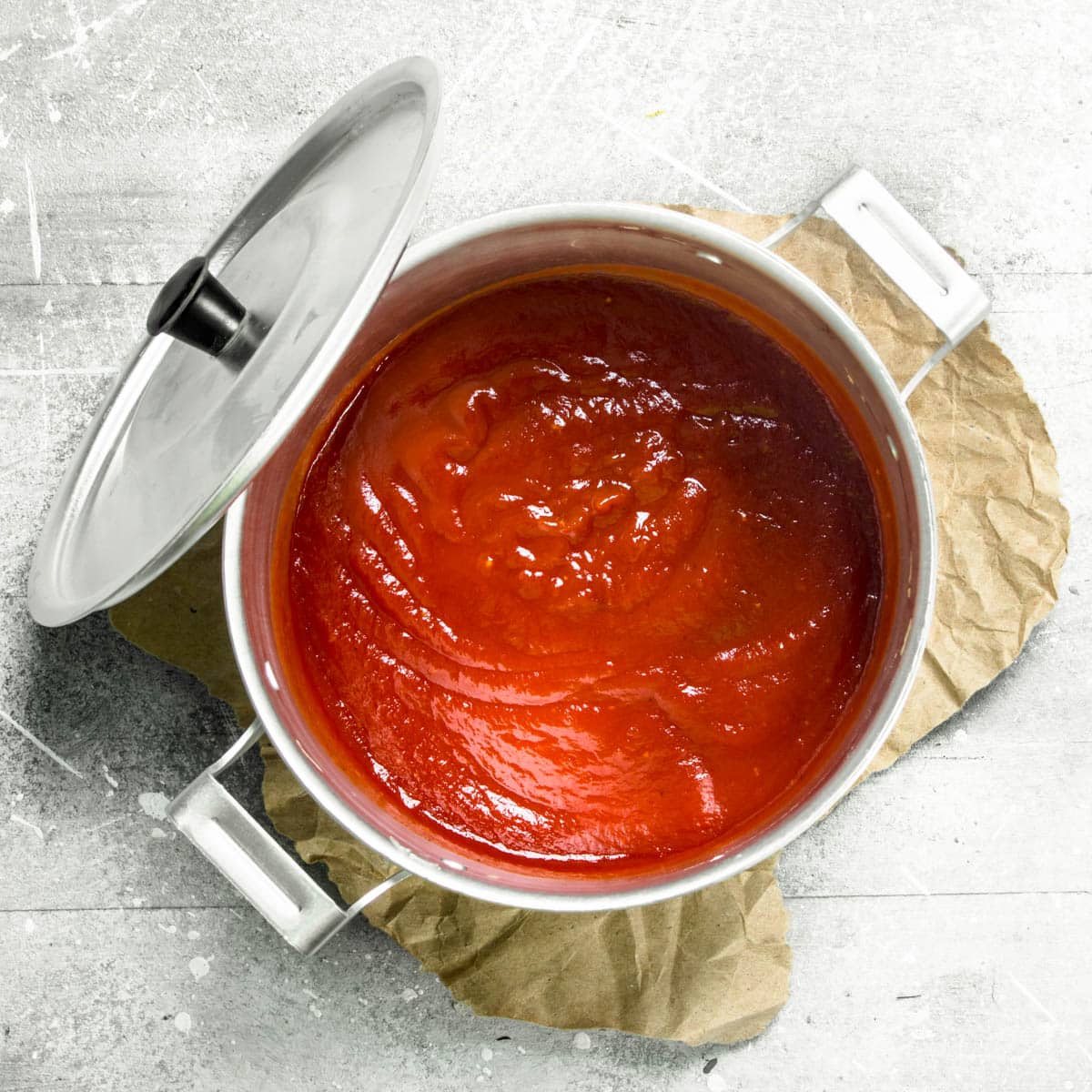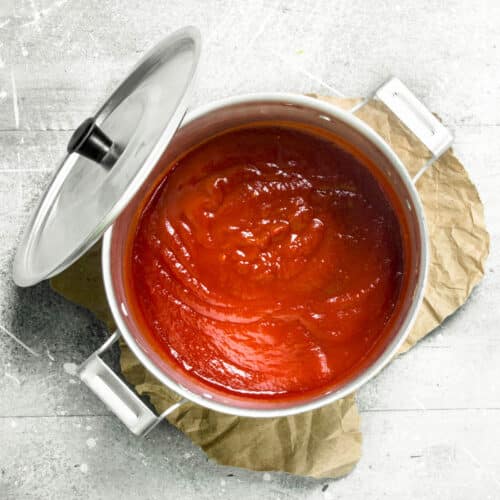How to Freeze Pasta Sauce
Are you tired of wasting your homemade pasta sauce because you made too much? Or maybe you want to keep a stash for those lazy days when all you want to do is toss some spaghetti into boiling water and have a hearty meal ready in minutes?
Whether your sauce is a simple tomato base or loaded with meat, we’ve got you covered! This guide will walk you through the ins and outs of freezing pasta sauce like a pro.

To freeze pasta sauce, let it cool to room temperature, then refrigerate for a few hours. Transfer the sauce into freeze-safe containers, leaving about an inch of space for expansion, and place in the freezer. For best quality, use the frozen sauce within 3-6 months, and thaw in the fridge, microwave, or stovetop.
Benefits of Freezing Pasta Sauce
There’s more to freezing pasta sauce than meets the eye. It’s not just about avoiding waste. There are several good reasons to start doing this if you aren’t already.
Convenience
There’s nothing better than having a meal ready to go after a long day. Freezing your pasta sauce means you can have a homemade meal ready in minutes, with minimal prep time.
Freezing pasta sauce isn’t just for your everyday marinara. It works incredibly well for meat sauces too!
If you haven’t tried it yet, give our best spaghetti meat sauce recipe a go. It’s rich, hearty, and freezes beautifully, allowing you to savor its flavor whenever the craving strikes.
Saves Money
By making a large batch of pasta sauce and freezing it, you can save money in the long run. This is especially true if you grow your own tomatoes or buy them in bulk when they’re in season.
Reduces Waste
Food waste is a serious issue, and every bit helps. By freezing your leftover pasta sauce, you’re not only saving money but also contributing to a more sustainable world.
How To Freeze Pasta Sauce
Now that we’ve covered why freezing pasta sauce is beneficial, let’s dive into the steps involved. Whether you’re dealing with meat or meatless sauce, the process is quite straightforward with a few simple guidelines.
Step 1: Cool Your Sauce
Cool your pasta sauce at room temperature before moving it into the fridge for a few hours. This is crucial to prevent the growth of bacteria and maintain the quality of the sauce.
If you’re dealing with a meat sauce, this step is especially important, as meat is a high-risk food for bacteria growth.
Step 2: Prepare Your Containers
Glass jars with airtight lids work best, but plastic containers are also fine. Just ensure they are clean and dry. Leave some space (about 1 inch) at the top of the container to allow for expansion as the sauce freezes.
Check out this site for the best containers for freezing sauces and more.
Step 3: Fill and Freeze
Pour your cooled pasta sauce into your prepared containers, seal them, and place them in the freezer. They’ll be ready to use anytime you need them!
Always label your containers with the date. This way, you know when you froze your sauce. Most pasta sauces can last in the freezer for up to 6 months, but the sooner you use it, the fresher it will taste.
And there you have it! Now that you know how to freeze pasta sauce. But don’t stop there! Why not pair your freezer-friendly sauce with equally convenient frozen pasta?
Check out our guide on how to freeze pasta for easy, home-cooked meals anytime you want. Just imagine – your favorite pasta dish ready to go at a moment’s notice!
Frequently Asked Questions About How To Freeze Pasta Sauce
Conclusion
By following the simple steps and tips on how to freeze pasta sauce outlined in this guide, you’ll be ready to whip up a quick and tasty pasta dish anytime you want.
Remember, a perfect pasta dish isn’t just about the sauce. If you find yourself with leftover cooked pasta, don’t let it go to waste!
There are efficient ways to store it for future meals. Check out our handy guide on how to store leftover pasta to complement your newly learned pasta sauce freezing skills!
So, go ahead, make that extra-large batch of sauce, and fear not! Your future self (and your wallet) will thank you.

How to freeze pasta sauce
Equipment
- Containers for freezing
- Ladle
Ingredients
- Pasta sauce
Instructions
- Prepare your favorite pasta sauce as per its recipe instructions.
- Allow the sauce to cool to room temperature (for about 2 hours).
- Transfer the cooled sauce to the refrigerator for a few hours.
- Pour the cooled pasta sauce into your clean, dry containers, leaving about 1 inch of space at the top for expansion.
- Secure the lids on your containers and label them with the date.
- Place the containers in the freezer until needed.
- When ready to use, thaw the sauce in the fridge overnight or in the microwave or stovetop.

Online Cooking for Beginners Course